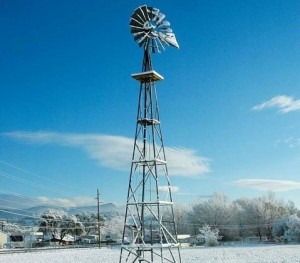 The Town of Star Valley was incorporated in 2005, making this community one of Arizona’s newest towns.
The Town of Star Valley was incorporated in 2005, making this community one of Arizona’s newest towns.
The town of Star Valley is located in Northern Gila County and contains 36 square miles of land within its incorporated boundaries, whereas the community’s planning area contains about 100 square miles. Currently, both public and private lands are included. Star Valley’s elevation is approximately 5,150 feet and is nearly surrounded by the Tonto National Forest. The Town is located south of the Mogollon
Rim and north of the Sonoran Desert, which comprises a portion of central and southern Gila County. Immediately west of the community is the incorporated Town of Payson.
Historical Setting:
The earliest inhabitants of the northern region of Gila County are believed to have arrived here around ten thousand years ago. Mogollon culture eventually moved into the region from the east about 300 B.C. followed by the Anasazi from the north and the Hohokam from the south. It is estimated that about 1,000 sites in the Star Valley area were inhabited over the time period from 600 and 1200 A.D. The Mogollons generally lived in villages, hunted, and grew various crops in gardens. Eventually, by about 1500 A.D., the Mogollon culture had been absorbed into other tribes living in the area.
One group, who lived in the area and known as the “Ancient Ones”, had a protrusion on the back on their heads referred to as an occipital bun. According to Penny Minturn, who is the advising archaeologist for the Northern Gila County Historical Society, this made them unique from the other prehistoric people who had lived in the area including the Anasazi, Mogollon, Salado, Sinagua, and Hohokam.
Once the Mogollon culture disappeared, the Apaches came onto the scene. The Apache culture emphasized hunting more than gardening and were, therefore, more nomadic in nature. The Tonto Apache tribe still maintains a reservation near Star Valley, just to the south of Payson.
February of 1863 saw the establishment of the Arizona Territory, but it would not be until 1876 when the area would see its first white settler. By 1878, a few miners were working the nearby hills and more settlers began to migrate to the area. Cattle ranches were also being established at this time. The miners and military were responsible for the early development of roads into the region.
The last major battle between the United States military and the Apaches occurred north of Star Valley and just into the southern portion of Coconino County. The engagement is referred to as the Battle of Big Dry Wash and took place in 1882.
Area residents have participated in this country’s major conflicts since World War I. In more recent times, Star Valley became an active participant in the Cold War when a seismological observatory was constructed east of Town on forest service land (Circa 1963). The purpose of this facility was to monitor underground nuclear testing by the Soviets and Chinese. The site is no longer operational and has been abandoned.
